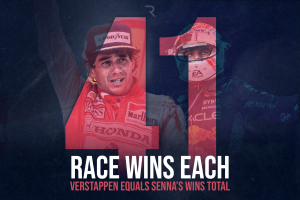In delivering the Red Bull Racing Formula 1 team its 100th grand prix victory, Max Verstappen made it six from eight this season in Canada, eight from eight for the team. The question of whether Red Bull can go unbeaten through the season is realistically being asked.
Yet there is a belief in some quarters of Aston Martin and Mercedes that they are each just one good upgrade away from challenging Red Bull. Montreal gave some credibility to that belief.
In a race of cold tyres and hot brakes, Verstappen’s winning margin over Fernando Alonso and Lewis Hamilton was just 9s and 14s respectively. Even if that’s taken from the safety car restart on lap 17, it’s an average of just 0.17s per lap, compared to the regular 0.7s per lap. Superficially at least, the others are catching.
The Aston Martin had a very significant upgrade here, hot on the heels of those for Mercedes and Ferrari in the previous two races. Red Bull has said all along that its performance effort would be front-loaded this season, given its resource restriction. So…?
Montreal represented a step change reduction in Red Bull’s race day superiority. Take out the multiple resets of the Melbourne race, and the Red Bull winning margin in the previous races ranged from 20-38s. That margin has not progressively reduced to only 9s but fallen there in one sudden swoop. Just one race ago, it was 24s. The question is whether that step-change came from the progress of the upgraded Aston Martin and Mercedes. Or something else?
If it’s from the progress of Aston Martin and Mercedes with Red Bull remaining static, it would imply their upgrades are each worth over 0.5s of lap time. Not impossible, but unlikely. Besides, that 24s winning margin at Barcelona was over the already-upgraded Mercedes. Has Mercedes suddenly found 0.5s by getting more from it in its third race? Or are there other explanations?
Was Verstappen just cruising?
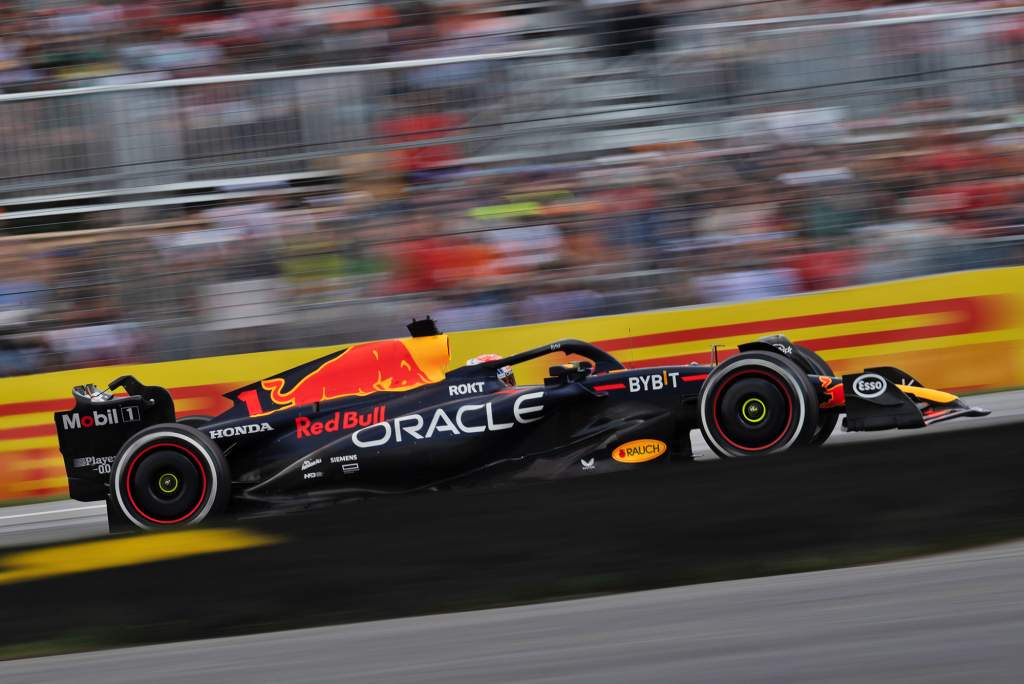
No. This was one of those unusual races in the Pirelli era where the tyre could not only be pushed hard, but actually needed to be, especially on the Red Bull, which is relatively gentle on its tyres. The fronts in particular had to be worked hard. So Verstappen was pushing.
“It was quite cold and to keep the tyres in the window you had to push but the grip was low, especially on the hard,” he explained.
“Ideally on a day like today, you need a car a bit harder on the tyre, maybe. It wasn’t our best day because of these tyre temperatures.”
Complicating that push imperative was the pull of managing brake temperatures, which is always a demanding task around this place. The relative inconsistency of Verstappen’s laptimes was not indicative of him only occasionally dipping into luxurious reserves, but simply keeping the brakes alive before then having to wake the tyres back up. Everyone’s laptime profile was like this and for the same reason.
At the start Verstappen was unchallenged from his brilliantly-gained pole, but Hamilton was able to out-accelerate Alonso for second. In this moment Alonso believed he’d possibly lost the chance of runner-up. But ultimately the Mercedes was a little slower than the Aston Martin, as we’d see later.
Having the Mercedes chasing Verstappen probably initially flattered the Red Bull a little. The Mercedes’ weakness remains its rear end grip and with so many traction zones here, that was telling. Verstappen had the gap over Hamilton out to 2s by the sixth lap, well on schedule to be out of undercut range – if indeed the undercut was ever going to be a thing. With almost everyone starting on the mediums, they’d be switching to the hards at the stops and it wasn’t certain they would come up to temperature quickly enough to make an undercut work.
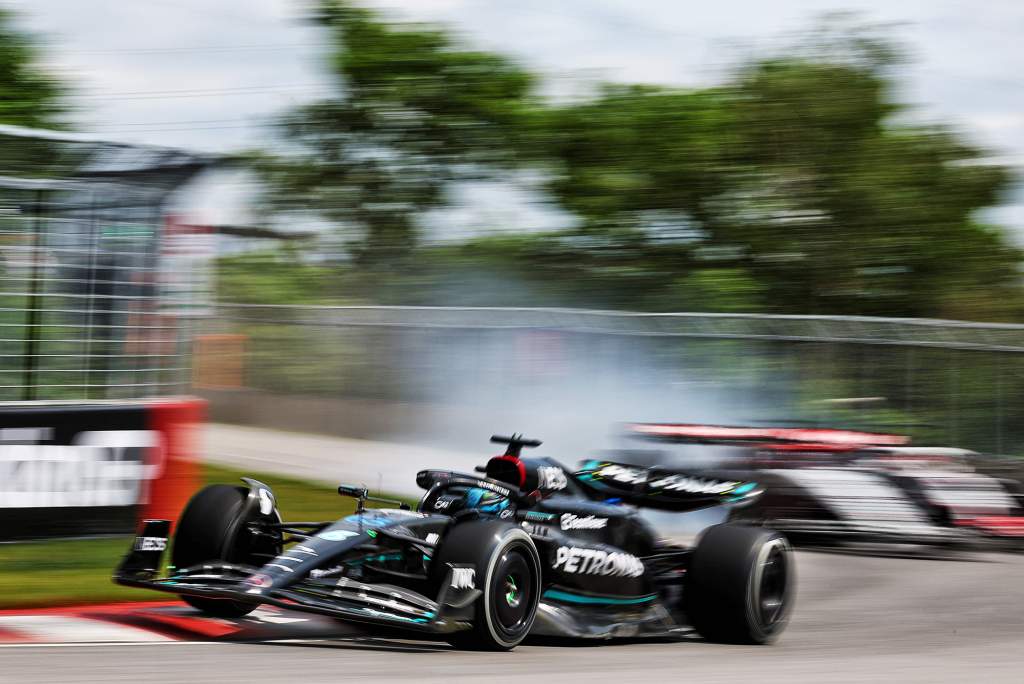
Most went into the race assuming it was more likely a one-stop than a two. But it was quite closely-poised. It moved decisively towards a two with a relatively early safety car. George Russell had hit the Turn 8 wall, leaving debris scattered across the track.
It was lap 12 of 70 and Russell had been keeping very close company with Alonso who in turn was within DRS range of Hamilton. There’d been a 5s gap behind to Esteban Ocon’s Alpine and the McLaren of Oscar Piastri (who had got by team-mate Lando Norris at the start and had just overtaken Nico Hulkenberg’s Haas for seventh). After Norris, the Ferraris of Charles Leclerc and Carlos Sainz were split by Alex Albon in the updated Williams, in a long DRS train.
As Russell limped back to the pits on a punctured rear for a new nose, the safety car was scrambled. Up front, it was a no-brainer to pit. Verstappen, Hamilton, Alonso, Ocon, Norris and Albon all came in to exchange their mediums for a set of hards.
Ferrari kept both cars out, reasoning that this would get them out of that DRS trap of slower cars, enabling them to utilise the very decent dry track pace, which they’d also shown on Friday. This would involve a long stint on the original mediums and just one stop each on the way to a solid fourth-fifth.
Also staying out, and right behind them, was Sergio Perez who had been one of the few to start on hards. He had no great pace and was unable to apply any pressure to the Ferraris, not even after the stops when he was on mediums to their hards. He was brought in for a free stop near the end to be fitted with a set of softs, depriving Hamilton of the fastest lap.
Was the Red Bull struggling?
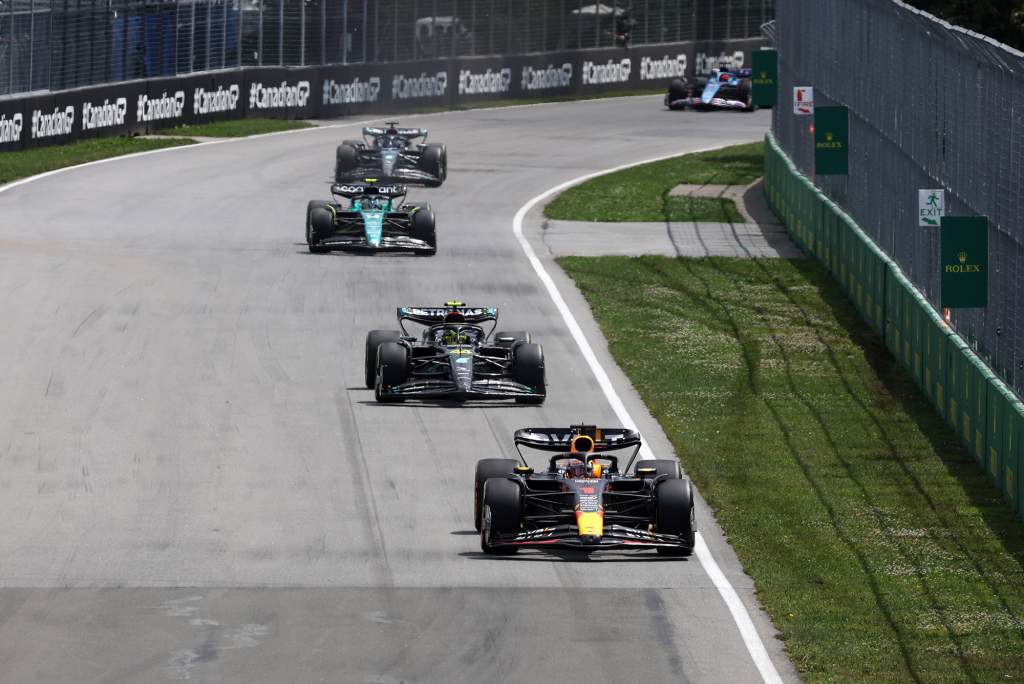
Yes, it was. By its own standards. “Probably not as comfortable as we would have liked,” said engineer Gianpiero Lambiase as Verstappen crossed the line for an Ayrton-Senna-equalling 41st F1 victory, “but I think we know where that might have been missing.”
It was too cool for the car to be at its best. Its gentle tyre usage, a boon in conventional heat-degradation races, was a bit of a liability here. Not a debilitating one, but enough for Alonso to have kept him on his toes, despite a 20-lap phase of lift-and-coast for the Aston Martin.
Alonso had passed Hamilton shortly after the restart, getting much better drive out of the hairpin and simply zapping by the Mercedes with DRS at the end of the straight. Thereafter he built up a small cushion over the Mercedes, the gap between them see-sawing as Alonso railed against the lift-coast he was being asked to perform.
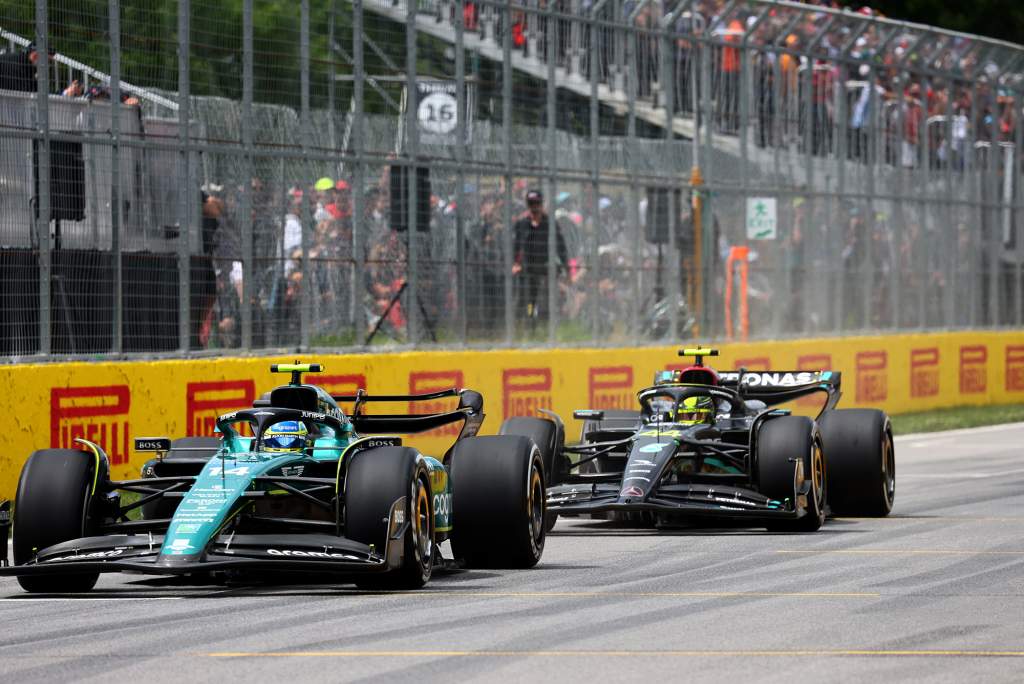
The team data was suggesting a fuel system problem which, had it been accurate, would have put him in danger of running out before the end. Turned out the data was false. So that 9s margin could have been smaller. “But I don’t think it would have been enough to have changed the result,” assessed team principal Mike Krack.
Some way behind the fastest lap-setting Perez, Albon completed a superb weekend performance, taking seventh in the Williams on its ancient one-stopping tyres, fending off the two-stopping Ocon, Norris and Lance Stroll.
Norris’s 5s penalty (for backing off too much behind the safety car, delaying those behind) dropped him out of the points and brought Valtteri Bottas’s Alfa Romeo into them.
The only point Verstappen didn’t take was that for fastest lap and it was striking to hear him tell Lambiase “It’s OK. I’m not chasing fastest lap,” when told of the Perez attempt on it. It’s almost as if he believes he can win the title without it. That title is surely a formality.
The tougher challenge is for the team to keep that clean sheet for another 13 races. The others are gaining, but perhaps not at the rate suggested by this weekend.


